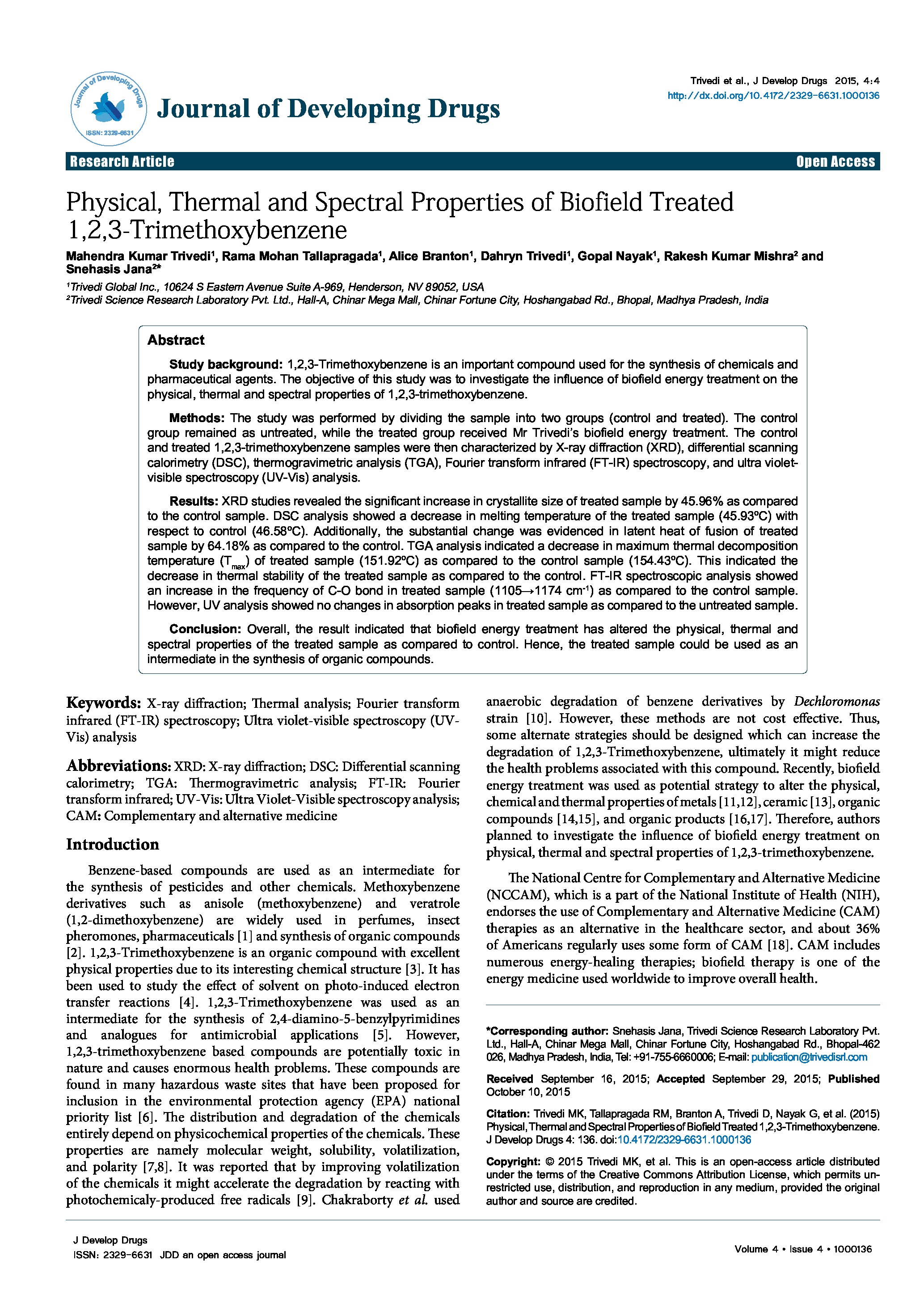Physical, Thermal and Spectral Properties of Biofield Treated 1,2,3-Trimethoxybenzene
Affiliation
Trivedi Global Inc.; Trivedi Science Research Laboratory Pvt. Ltd.
Main category
Natural Sciences (Analytical Chemistry, Method Development (Chemistr)
Abstract
Study background: 1,2,3-Trimethoxybenzene is an important compound used for the synthesis of chemicals and pharmaceutical agents. The objective of this study was to investigate the influence of biofield energy treatment on the physical, thermal and spectral properties of 1,2,3-trimethoxybenzene.
Methods: The study was performed by dividing the sample into two groups (control and treated). The control group remained as untreated, while the treated group received Mr Trivedi’s biofield energy treatment. The control and treated 1,2,3-trimethoxybenzene samples were then characterized by X-ray diffraction (XRD), differential scanning calorimetry (DSC), thermogravimetric analysis (TGA), Fourier transform infrared (FT-IR) spectroscopy, and ultra violet-visible spectroscopy (UV-Vis) analysis.
Results: XRD studies revealed the significant increase in crystallite size of treated sample by 45.96% as compared to the control sample. DSC analysis showed a decrease in melting temperature of the treated sample (45.93ºC) with respect to control (46.58ºC). Additionally, the substantial change was evidenced in latent heat of fusion of treated sample by 64.18% as compared to the control. TGA analysis indicated a decrease in maximum thermal decomposition temperature (Tmax) of treated sample (151.92ºC) as compared to the control sample (154.43ºC). This indicated the decrease in thermal stability of the treated sample as compared to the control. FT-IR spectroscopic analysis showed an increase in the frequency of C-O bond in treated sample (1105→1174 cm-1) as compared to the control sample. However, UV analysis showed no changes in absorption peaks in treated sample as compared to the untreated sample.
Conclusion: Overall, the result indicated that biofield energy treatment has altered the physical, thermal and spectral properties of the treated sample as compared to control. Hence, the treated sample could be used as an intermediate in the synthesis of organic compounds.
DOI
10.18147/smn.2016/paper:338
Do you have problems viewing the pdf-file? Download paper
here
If the paper contains inappropriate content, please
report the paper. You will be redirected to the landing page.
